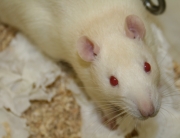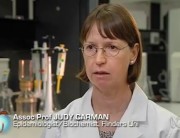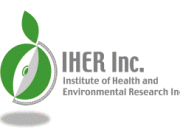Yesterday, three respected international scientists raised very strong concerns in regards to the GM wheat trials currently occurring in Australia.
Source: Greenpeace Australia Pacific – 14 September, 2012
CSIROs wheat lines are genetically modified using the ‘technique’ of RNAi, in this case to alter grain starch composition of the wheat. RNAi is a type of gene silencing that occurs in the cells of plants and animals. Gene silencing reduces or prevents the protein related to that gene from being produced – RNAi stops or interferes with gene expression. This branch of science is still the source of many surprises to researchers, including a recent discovery that certain types of RNAs can be taken up in the bodies of animals.
Based on this, molecular biologist and risk assessment researcher Professor Jack Heinemann of the University of Canterbury (New Zealand) compared the similarity of the target genes in the GM wheat to those present in the human genome. A match was found between the genes of “the wheat branching enzyme which makes starch in wheat, and the human branching enzyme which produces glycogen”. This means that silencing of these human genes might be possible, and could have implications to human food safety. According to Biochemist Dr Judy Carman from Flinders University (SA), “it is clear that there is an obvious risk to animals and humans who eat these GM wheat varieties”. She also said this could lead to disease and potentially even death.
We are often told by GM developers that because no novel protein is produced by this form of genetic manipulation (unlike current commercial GM crops), there is little cause for concern with GM wheat developed by CSIRO. This new study shows, to the contrary, that the potential implications for human and animal health of GM are extremely worrying and what’s worse, that they have never even been considered, and are not therefore being tested for.
How is it possible that the CSIRO had authorisation to conduct open air field trials and human feeding trials in this area, without having conducted any necessary research to ensure these risks are unwarranted? What is clear is that the GMO regulatory system in Australia is fundamentally flawed and in need of urgent review.
Earlier today, Western Australian opposition leader, Paul Papalia, called for the end of GM wheat trials in WA. Terry Redman, WA Agriculture Minister tried to reassure voters that things were ok, claiming there are no plans at this stage to trial GM wheat in WA. But what is extremely concerning is that Mr Redman doesn’t even seem to know that the dgfev CSIRO is already trialling this form of GM wheat in Merredin (about 250km from Perth).
This open air field trial (along with others throughout the country) could lead to irreversible contamination of the environment and the food supply. Given the risks outlined today by Professor Heinemann and Dr Carman, this should be a concern for all Australians and must be stopped immediately.
These forms of GM wheat could be authorised in Australia as soon as 2015 and under current labelling rules it would be barely possible to avoid eating it, even if you wanted to. This is why Greenpeace has repeatedly called for a moratorium on GM Wheat.
The CSIRO should focus their research on safer traditional methods of breeding via which they already achieve similar results, without any of the risks outlined by these scientists



































